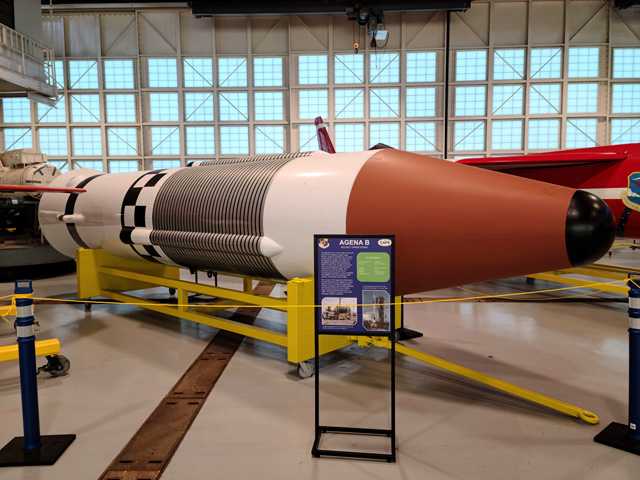
Overview
Display location:
- Hangar C, Cape Canaveral Space Force Station
Type: Upper stage spacecraft
Agency: U.S. Air Force, NASA
Contractor: Lockheed Missile and Space Company
History
The Agena was one of the workhorses of the U.S. space effort and was used repeatedly by the Air Force for various military projects such as MIDAS (detection of enemy ballistic missile launches), SAMOS (global reconnaissance), and Discoverer (development of space vehicular components), plus numerous unnamed classified programs. The National Aeronautics and Space Administration (NASA) also relied on the Agena for such programs as Ranger (moon probe), Mariner (Venus and Mars probes), and Echo (inflatable communications reflector). The Agena launched on 16 March 1966 captured the greatest public attention when it served as the docking vehicle for the Gemini 8 crew.
Agena was also considered one of the nation’s most versatile space vehicles. It served as the upper stage power plant for the Air Force’s Atlas and Thor missiles, and as a satellite in various Air Force space programs. When used for deep space probes and earth orbiting missions, it was capable of maintain itself and its payload for many months.
The original Agena vehicle, identified as Agena A, was custom built to the specifications of each mission. It measures approximately 19 feet in length and 5 feet in diameter. Agena A probed the reliability and soundness of the all-purpose vehicle concept and led to the development of the Agena B, a considerably larger vehicle with a restartable engine and greatly increased payload carrying capacity.
The Agena B was provided to the museum by the Air Force Orientation Group at Wright-Patterson Air Force Base, Ohio in February 1967.